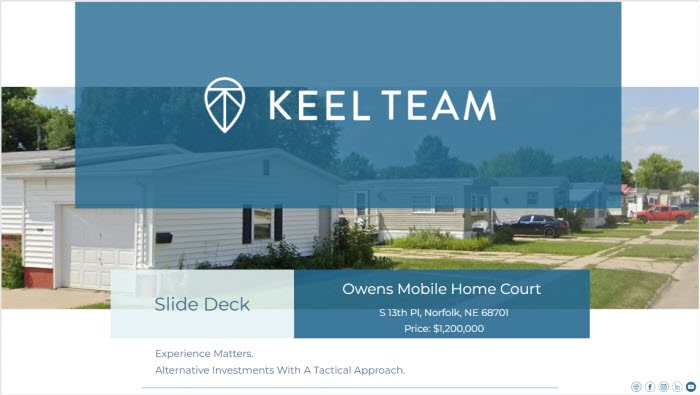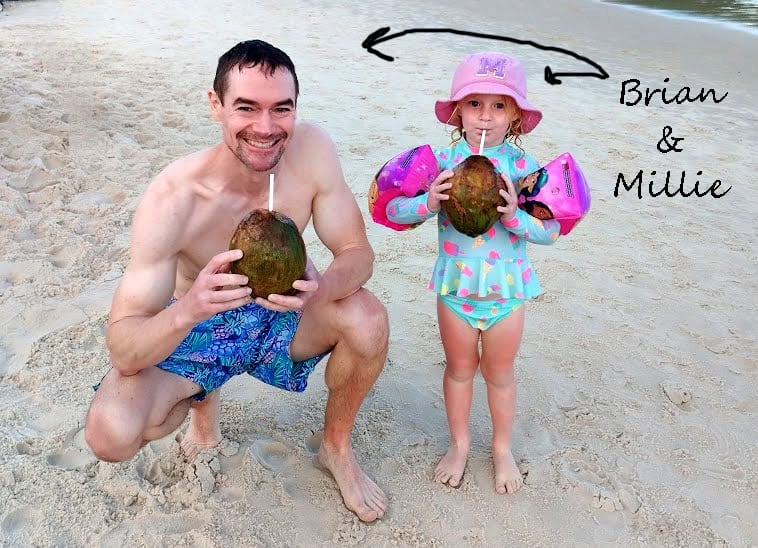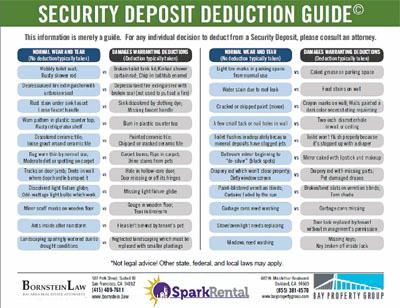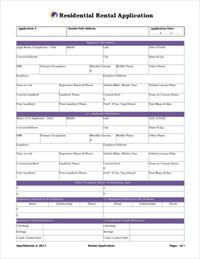Co-Investing Club: Group Real Estate Investments
Monthly passive real estate deals, vetted together as a club.

We Go In On Real Estate Deals Together
Every month, our investment club jumps on a video call to discuss and vet a passive real estate investment together.
What kinds of deals?
-
- Private partnerships
- Private notes
- Real estate syndications
- Real estate equity funds
- Secured debt funds.
Any club member can invest with $5,000 (or more if you want). Compare that to the $50,000 – $100,000 you’d otherwise need for passive real estate investments or a down payment and closing costs to buy a property yourself. All deals are optional — skip any you don’t love.
And no, you don’t need to be an accredited investor to participate.
Curious about past investments’ performance?
Here’s every deal we’ve ever invested in — and how it’s performed.
Investments & Returns
Investing smaller amounts means more diversification across:
-
- Geographical markets all across the U.S. (full map below)
- Types of properties: multifamily, mobile home parks, storage, short-term rentals, hotels, land and more
- Operators
- Investment timeline: from 9 months to 5-7+ years
We typically look at deals targeting 14%+ returns. Some pay interest or distributions right away, others take a couple years before the cash flow starts.
Oh, and because we invest together, we often score higher return splits than investors can earn by themselves.
You can view all of our past investments and their performance here.

Where Our Real Estate Investment Club Has, Well, Invested!
Curious about what kinds of group real estate investments we make? Here’s a map of the 30+ properties where we’ve invested so far:
Deals Invested In
Avg. Targeted Annual Returns
States Invested In
Recent Examples of Deals
Interactive maps are all well and good, but what about how these deals are structured? The projected returns? Give me the juicy details!
You can view the exact details of every property we’ve ever invested in as an investment club at any time.
Here are a few recent examples of passive real estate deals that our Co-Investing Club has invested in:

Flip Partnership
We partnered with a house flipping company that does 70-90 house flips each year. They’ll use our money to flip as many properties as they can over a 16-month period, before paying us out as a silent partner.
-
- Projected Annualized Return: 20%
- Minimum Guaranteed Return: 8% (backed by a personal guarantee from the owner and a corporate guarantee, with ~$6.2 million in real estate equity)
- Number of Flips: 4-6 (we started with three simultaneously, but one is a longer-term flip)
- Debt: None

Kansas City Portfolio
This portfolio includes three properties with a combined 181 residential units plus ~40,000 square feet of retail space connected to one of the apartment complexes. The retail and residential units combine for a work-play-live area, and include a micro-brewpub, a Mexican restaurant, and more. Here are the projected numbers:
-
- Projected IRR: 16%
- Preferred Return: 7%
- Average Cash-on-Cash Return (Yield): 6.5 – 8.5%
- Profit Split: 70/30 up to a 2X equity multiple, 50/50 split beyond that
- Financing LTV: 70%
Not sure what those terms mean? Reference this glossary of real estate investing terms.

SFH Construction Partnership
We partnered with a spec home developer in Central Texas (Austin metro area). They buy dilapidated homes on huge lots, knock them down, subdivide the lot into three normal-sized lots, and build three new homes.
-
- Projected Annualized Return: 30.5%
- Minimum Guaranteed Return: 5% (backed by a corporate guarantee, with ~$3 million in real estate equity)
- Timeline: 15 months (estimated)
- Reinvestment Possible: By unanimous vote, we could pocket the returns and reinvest the principal into another construction partnership.

Elkhorn Mobile Home Court
“Unsexy” investments often come with oversized returns, precisely because most investors dismiss them or overlook them.
-
- Projected IRR: 16.7%
- Preferred Return: 10%
- Average Cash-on-Cash Return (Income Yield): 10% then infinite returns upon return of capital
- Profit Split: 20/80 after return of capital
This sponsor takes a unique approach: after stabilizing the cash flow and paying investors their 10% preferred return each year, they funnel all excess cash flow back to investors to repay their initial investment. Once all investors have gotten their initial investment capital back, they remain partial owners in the property, collecting 20% of the profits in perpetuity.
We Put Our Money Where Our Core Values Are
Co-Investment: Our founders invest as members, too. Why do you think we started this investment club in the first place?
Transparency: The Club opens a new joint LLC and bank account for each investment. Participants all become owners in the joint LLC with full tax advantages and get “View” access to the joint bank account.
Diversification: Across geographical markets, asset classes, operators, and timelines.
Access for Non-Accredited Investors: Anyone can join and invest, not just wealthy accredited investors. And yes, you can invest with an entity, self-directed IRA, trust, or as an individual or married couple.

$5K Min. Investment
Ownership in Joint LLC
Full Tax Benefits
Cash Flow & Appreciation
Diversify: Cities, Asset Classes, Operators
How Group Investing Works in Our Real Estate Investment Club
Our real estate investing club is one of a kind — literally no one else lets you invest smaller amounts in real estate syndications (group investments) like we do.
Here’s how it works in just 86 seconds:
Ready to Start Investing as a Community?
Join the Co-Investing Club to invest passively in real estate with a fraction of the typical investment minimum. View all past Club investments and their performance here.
Free Membership
$0/month
- Check out monthly group investments
- Attend Club deal discussions & group vetting
- Get comfortable before investing
- No credit card required (truly free!)
Investor Membership
$59/month
- Participate in group investments with $5K or more
- Vet deals together on live group calls, with recordings
- Access to Club vetting tools and private Facebook Group
- Or save $211 on an annual membership for $497
 No-Questions-Asked Refund Policy
No-Questions-Asked Refund Policy
The Co-Investing Club is not for everyone.
Join the Club, attend a meeting or two, and if you decide it’s not for you, we’ll refund your membership dues with no questions asked.
Seriously, we only want people in the Co-Investing Club who are excited to invest in deals together. It’s that simple.

How Do Club Costs Impact Returns?
The Co-Investing Club comes with two types of costs:
-
- Membership Fee: $59/month or $497/year. This grants you access to participate in deals alongside other investment club members. You can end your Co-Investing Club membership at any time.
- Joint LLC Accounting & Administrative Costs: $75/participant/year (or we can outsource it to Tribevest for $150, which is determined by vote for each deal). We create a joint LLC for each investment that we go in on together. These come with a lot of costs, from opening and renewing the LLC to filing LLC tax returns to creating K1s or 1099-INTs for every participant. It also takes a ton of labor on our part, opening the joint bank account, giving all members access to it, coordinating with the deal operator on getting tax forms and updates, etc.
Our aim is for the returns from a single deal to more than cover these costs every year. For example, say you invested the minimum $10,000 and earn a 15% return, that’s $1,500. That’s nearly triple the annual membership ($497) and the joint LLC cost ($75) of $572 total.
And of course, the idea is consistent investing with smaller amounts. The more you invest, the less these flat fees eat into your returns. If you invested $10,000 a quarter at similar returns, that would come to $6,000. If you invested $30,000 a quarter, that would come to $18,000. And so on.
Investing smaller amounts through a group LLC comes with slightly higher cost than going it alone. We know firsthand that being part of an organized community of investors, with consistent deal flow every few works, has enormous value.
 Learning Zone
Learning Zone
New to group real estate investments? No sweat. Most middle-class investors have never heard of real estate syndications, and those who have harbor plenty of misconceptions about them.
Here’s what you need to know about joint ventures in real estate before joining the Co-Investing Club.
What Is Fractional Ownership in Real Estate?
It’s exactly what it sounds like: you buy in as a partial owner in a large real estate deal.
In most cases, we invest in multifamily properties (apartment complexes). When available, we also love to diversify into other types of real estate fractional ownership such as self-storage facilities and mobile home parks.
This lets you spread money among many different passive real estate investments. The only labor required on your part is vetting the deal — which we all do together as a real estate investing club. Specifically, we bring the sponsor (the syndicator) on a video call to answer all of our collective questions. Then each investment club member can decide for themselves whether they want to participate in that particular deal.
Why Invest in Group Real Estate Investments
Most people come for the returns but stay for the diversification and passive real estate investing.
Low Minimum Investment
When you invest with a fractional ownership model like an investment club, you can invest $5K in deals instead of $50-100K needed for direct ownership or investing in syndications by yourself. That makes it a lot easier to build a diversified real estate portfolio.
High Returns
We target deals aiming for 15-25% annualized returns. In the real world, expect a bell curve on returns: some will underperform or even lose money. Others will deliver huge returns. For example, one sponsor we’ve invested with a few times now has an average IRR (annualized return) over 70% on the deals they’ve completed.
Passive Real Estate Investing
Unlike flipping houses or buying rental properties, group real estate investments are 100% passive. After transferring in your investment, you just sit back and collect cash flow distributions. When the property sells, everyone gets paid out proportionately to their ownership.
Potential for “Infinite Returns”
Some syndicators refinance to return passive investors’ capital to them, then hold the properties longer. In many ways it’s the best of all worlds: you get some or all of your investment back, but you keep your ownership in the property. You continue collecting cash flow, and get a big paycheck when the property sells. Think of it like the BRRRR method in residential real estate investing.
Tax Benefits
Fractional ownership in real estate offers the same tax benefits as becoming a landlord. All the same investment property tax deductions come off your taxable income. And not only do you get to take property depreciation, but most sponsors do a “cost segregation study” to accelerate the depreciation. That means you show paper losses even as you collect real distributions and cash flow. You’ll get your own K1 at tax time for each deal you participate in.
 What Are the Cons of Group Investing in Real Estate?
What Are the Cons of Group Investing in Real Estate?
All investments come with risk, and group investing in real estate is no different.
Theoretically, the sponsor could run off to Guatemala with our joint investment money. That’s a risk we can manage by vetting sponsors extremely carefully. We only invite syndicators in front of the Club if they have a long, proven track record of success.
A more realistic risk is that something unpredictable happens and the market changes. Cap rates could skyrocket, reducing sales prices. A city could go from “the cool kid” to the “loser” for some reason. A gnarly recession could strike the U.S., driving up vacancy rates and stalling rent growth.
We view these joint ventures in real estate as medium-risk, high-return. While no investment is risk-free, we aim to mitigate these risks by looking for deals with conservative underwriting and fixed-interest, long-term debt.
Risk aside, real estate syndicates do come with drawbacks. These are medium- to long-term investments, usually 2-7 years. Once invested, you can’t pull your money out — there’s no secondary market or liquidity for these deals.
As noted above, real estate syndications require high minimum investments. Out in the wild, that usually means $50-100K. Our real estate investment club lets you pool funds with other investors, cutting that minimum investment to $5K. But for middle-class investors (like most of us are), $5,000 is still real money.
Finally, merging funds together under a joint LLC adds accounting and administrative costs. For every deal we take a vote on whether to handle these in-house for $75/year per participant or to outsource them to a third party.
 How Returns Work in Real Estate Fractional Ownership
How Returns Work in Real Estate Fractional Ownership
In a real estate syndication deal, returns are usually split between the sponsor and the passive real estate investors in what’s called a “waterfall.”
Often that includes a preferred return on cash flow for the duration of the deal. That means passive investors (also referred to as limited partners or LPs) get first priority on receiving distributions before the sponsor starts collecting their portion of returns.
When the property sells, the sponsor is entitled to a certain percentage of the profits to compensate them for their labor in finding, buying, managing, and ultimately selling the property. The remaining percentage gets split up proportionately among financial investors, based on their ownership interest. Sometimes the sponsor’s portion (the “promote”) rises once they reach certain return benchmarks.
Confused? An example will help.
Say a syndication deal offers a 7% preferred return, then a 70/30 split on profits thereafter. You receive the first 7% of returns, both for rental income while the property is owned and upon the property’s sale. The sponsor gets second priority in collecting 7% returns themselves.
Above a 7% return, the sponsor takes 30% of the remaining profits as their portion (the promote). The remaining 70% of profits gets split up based on ownership percentage.
With us so far? Good, because it can get more complicated. Imagine now that for returns over 20%, the split drops to 50/50. In other words, you’re entitled to 70% of the profits up to a 20% return, but after that the sponsor takes half off the top and the other half gets divvied up among financial investors.
FAQ About Group Investing in Real Estate
Still have questions? We’ve got you covered.
Can I invest under an entity name such as an LLC, in these group real estate investments?
Yes, you can invest through our real estate investment club using a legal entity such as an LLC or S-corp.
Can I invest through the real estate investment club with my self-directed IRA?
Yes. We have members who routinely invest through their self-directed IRAs, and you can do likewise with most self-directed 401(k)s.
How are taxes handled?
We open a new LLC for each deal, and you get listed as a partial owner of the LLC. You’ll receive your own K1 at tax time each year.
Participating members pay $75 a year to cover the joint LLC accounting and administrative costs.
Does SparkRental earn a commission or otherwise get a cut on these investment club deals?
No. We earn all of our money through investment club membership fees (or course sales from our FIRE from Real Estate course).
Deni and Brian simply invest alongside club members as equal partners and passive investors.
Can non-US citizens invest as a member of your real estate investing club?
Yes, but you need a U.S. bank account to transfer and receive funds. You need a taxpayer ID number in the U.S., which you can get by creating an LLC and getting an EIN.
Can spouses invest together in these group real estate investments, with both names listed?
Yes, we can list spouses together as investors.
What’s the difference between group real estate investments and a REIT?
You can buy and sell shares of real estate investment trusts (REITs) on public stock exchanges. They come with great liquidity, and you can invest for the price of a single share. That makes them an easy way to get started on a diversified portfolio of real estate assets.
But that same liquidity from trading on stock exchanges comes with some drawbacks too. Publicly traded REITs come with volatility and they correlate with stock markets. And, because anyone can invest with just a few dollars, you can’t expect outstanding returns.
Fractional ownership in real estate through syndications involves private equity investing, historically only available to the rich. In other words, you aren’t competing with every Tom, Joe, and Harry for returns.
How are real estate syndications different from real estate crowdfunding?
That said, real estate crowdfunding often offers similar types of real estate properties including apartment buildings, commercial properties including industrial or office buildings, and even single-family homes and vacation properties. Individual investors who don’t yet have $5,000 to invest should consider starting with crowdfunding platforms such as Fundrise, Groundfloor, or Arrived, which let you get started with $10-100.
How much passive income can I expect from fractional ownership in real estate?
No returns are guaranteed, all investments have risk, yada yada yada. But in general, you can expect a yield of 4-8% on these group real estate investments. Most deals pay a relatively low yield in the first year or two while they renovate the property and stabilize rents, then the yield jumps up. Investors receive distributions at regular intervals, usually monthly or quarterly.
If the sponsor refinances the property and returns some or all of your initial investment back to you, you can expect your yield to leap even as the actual dollar amount of distributions drops.
Are there any other costs associated with investing through the Co-Investing Club?
Each joint LLC comes with its own accounting and administrative costs. Participants in each deal typically vote on whether to outsource this work to a third party or handle the work in-house. If the latter, it costs $75/year per participant.
What type of legal entity or structure do you use for fractional property ownership?
We create a Pennsylvania LLC (limited liability company) for each deal, to jointly hold our collective ownership. We then create a joint checking account for that LLC, used only for that single property or deal. Ideally, someone steps up to serve as treasurer and oversee distributions to each member.
Who handles property management on these fractional real estate investing deals?
It depends on the deal. Some sponsors have an in-house property management team, others outsource to a property management company. Either way, expect similar costs for property management fees.
Your Partners in Real Estate Fractional Ownership
Your partners in these group real estate investments include other investment club members and Deni and Brian. You probably know us already as a SparkRental reader — we cofounded SparkRental and we invest our personal money in each Co-Investing Club deal.
Deni Supplee started her real estate career as a property manager. She later became a landlord, real estate investor, and licensed real estate agent.
Brian Davis started as an account executive handling investment property loans. Then he started buying rental properties, and later writing for publishers such as BiggerPockets, Inman, Money Crashers, and REtipster as a real estate expert. He and his family spend most of the year traveling in South America — precisely why he loves passive real estate investing!
Between them, Deni and Brian have over 60 years of real estate investing experience. (So yeah, we’d like to think we know what we’re doing!)
Questions About Our Co-Investing Club?
Header Image Credit: Deror avi, CC BY-SA 4.0, via Wikimedia Commons







